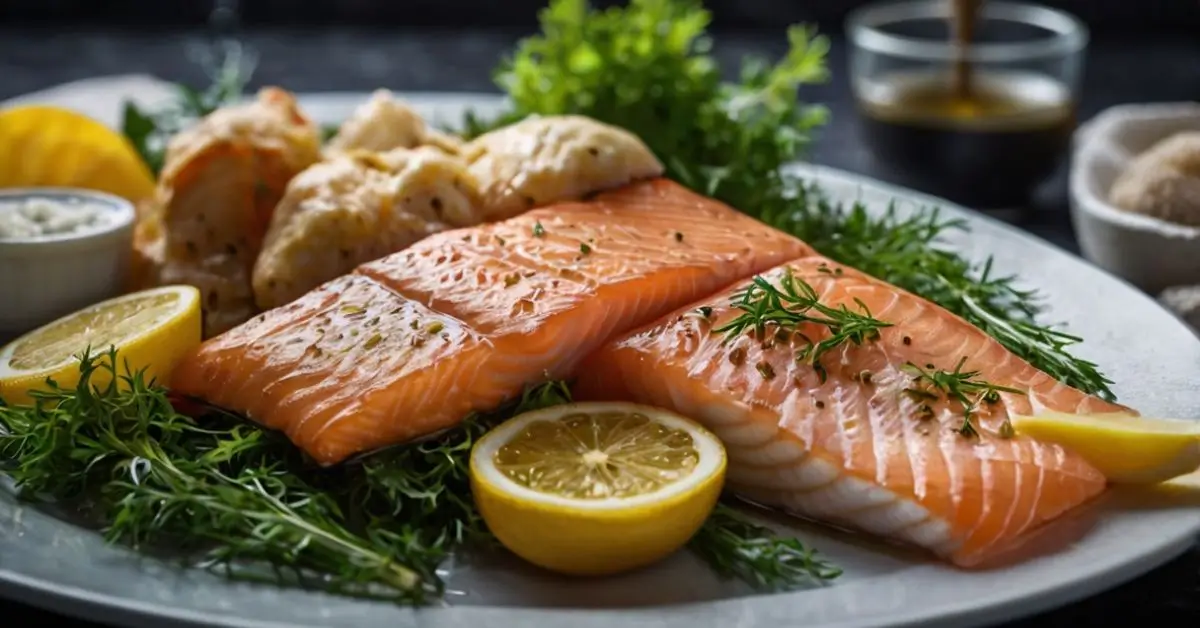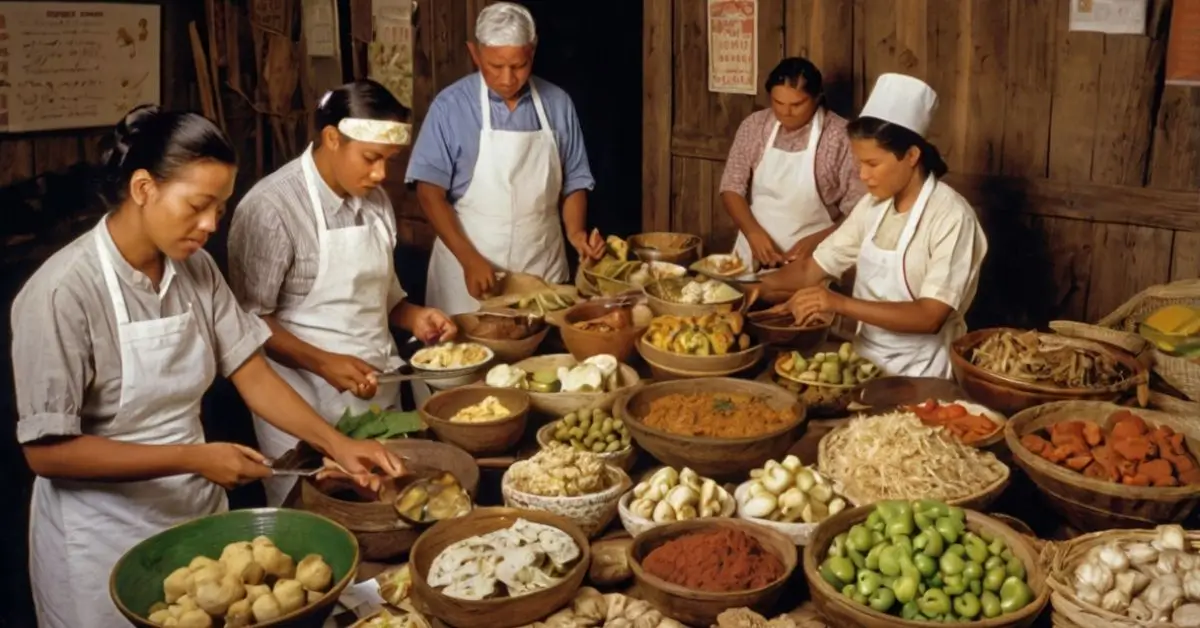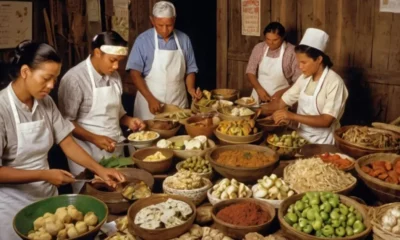FOOD & DRINKS
How to Contact Auroshikha: A Complete Guide for 2025

If you’re seeking to reach out to Auroshikha, you’ve come to the right place. Whether you need assistance with their products, services, or have questions regarding their offerings, knowing how to contact Auroshikha is essential. This article will provide you with all the necessary details on how to contact Auroshikha, including the most effective methods to get in touch and useful insights into their communication channels.
Profile Summary
| Feature | Details |
|---|---|
| Company Name | Auroshikha |
| Industry | Spiritual products, Incense, Fragrances, and natural wellness products |
| Contact Methods | Email, phone, social media, direct visits (location-based) |
| Customer Support Hours | Monday to Friday, 9:00 AM to 6:00 PM |
| Known For | High-quality incense, spiritual products, and natural wellness solutions |
What is Auroshikha?
Auroshikha is a company that offers a wide range of products, including incense, oils, and other natural wellness items. Their products are widely known for promoting spiritual well-being and providing a soothing experience. Auroshikha’s offerings are especially popular in the holistic and wellness space, and the company prides itself on its quality and craftsmanship. Over the years, they’ve built a strong customer base and earned a reputation for their commitment to sustainability and customer care.
If you wish to reach out to Auroshikha, whether it’s for inquiries, feedback, or orders, there are several ways you can do so. Below, we’ll break down each method in detail.
How to Contact Auroshikha: Methods and Channels
When trying to contact Auroshikha, you will find multiple options. Each method has its own advantages depending on the urgency of your query and your preferred form of communication.
1. Email Contact
The most formal and professional way to contact Auroshikha is through email. Email communication is ideal for detailed inquiries, feedback, and customer support requests. It’s also useful when you want to ensure that your communication is documented.
- Why Choose Email? Email is a great option for those who want a written record of their communication. It allows for a thoughtful, structured approach, especially when dealing with queries that may require explanations, attachments, or product information.
- Common Email Inquiries: Customers often use email to ask about product details, inquire about availability, or track their orders.
2. Phone Contact
Auroshikha also provides a phone contact service. This is the best option for those who prefer real-time communication and immediate feedback. When contacting Auroshikha via phone, ensure to call during their customer support hours.
- Why Choose Phone Contact? Phone calls allow you to resolve queries quickly, especially if you need answers on the spot or need to clarify details. It is particularly useful for urgent issues like order cancellations or product exchanges.
- Tips for Phone Communication: Be clear about your inquiry to help the customer service representative address your needs efficiently.
3. Social Media
Auroshikha maintains an active presence on various social media platforms. Social media is an excellent option for quick communication, especially if you want to follow the latest updates, promotions, or have informal inquiries.
- Why Choose Social Media? Social media offers a more relaxed, engaging way to connect with the brand. It’s great for real-time interactions, and you can also stay updated on any ongoing events or offers.
- Social Media Channels: Look for Auroshikha’s official profiles on popular platforms like Facebook, Instagram, or Twitter. Direct messaging via these platforms often leads to swift responses.
4. In-Person Visit (Location-Based)
For those who are near Auroshikha’s physical location, visiting the company in person is a great option. This method provides an opportunity for face-to-face interaction, which can be helpful if you want to inspect products or have specific inquiries.
- Why Choose In-Person Visits? Personal visits allow you to experience Auroshikha’s offerings firsthand and gain more detailed information. Additionally, if you’re making large orders or need assistance with a specific product, this method can offer immediate help.
5. Postal Mail
Though more traditional, sending a letter or postal mail to Auroshikha remains an option. This method is less commonly used but may still be relevant for certain types of formal communication or official correspondence.
- Why Choose Postal Mail? Postal mail is most commonly used for official matters that require a physical letter or documentation. It is slower compared to other methods but can serve as a formal way of reaching out for specific requests or disputes.
6. Contact Form on Website
Some companies, including Auroshikha, offer a contact form on their website. This form allows you to submit inquiries directly, and the company’s team will get back to you via email or phone.
- Why Choose a Contact Form? A contact form is a quick and efficient way to submit your query without needing to compose a full email. It’s especially useful for routine inquiries or if you’re seeking a response from a specific department within the company.
Comparison Chart: Contact Methods for Auroshikha
| Contact Method | Advantages | Best For | Response Time |
|---|---|---|---|
| Documented communication, clear & structured | Detailed inquiries, order updates, feedback | 24-48 hours | |
| Phone | Real-time interaction, immediate answers | Urgent issues, quick clarifications | Immediate to 24 hours |
| Social Media | Quick, informal interaction, real-time updates | Promotions, casual inquiries, updates | Instant to 12 hours |
| In-Person Visit | Direct, hands-on experience, face-to-face | Product inspection, large orders, inquiries | Immediate |
| Postal Mail | Formal, documented | Legal issues, formal requests | 5-7 business days |
| Contact Form | Easy submission, structured responses | Routine inquiries, customer service | 24-48 hours |
Best Practices for Contacting Auroshikha
- Be Clear and Concise: Whether you are reaching out via email, phone, or social media, always be clear and concise with your inquiry. This will help the customer service team respond more effectively and in a timely manner.
- Provide Relevant Information: When contacting Auroshikha, provide all necessary information, such as order numbers, product names, and any relevant details that will help speed up the process.
- Respect Business Hours: Auroshikha’s customer service operates during specific hours, so be sure to contact them within these times to avoid delays.
- Follow-Up: If you don’t receive a response within the expected timeframe, consider following up. For urgent inquiries, phone calls are generally the best option.
Conclusion
Knowing how to contact Auroshikha is key to resolving your concerns, whether you’re seeking more information about their products or need customer support. From email and phone support to social media and even in-person visits, Auroshikha offers a variety of ways to get in touch. By understanding the available contact methods, you can choose the most effective option based on your needs. Make sure to stay patient and respectful of their response times to ensure the best possible customer service experience.
Homer Foods
FAQ
1. What is the best way to contact Auroshikha for urgent issues?
For urgent issues, calling Auroshikha directly is the fastest way to get a response.
2. How long does it take for Auroshikha to respond to email inquiries?
Auroshikha typically responds to email inquiries within 24-48 hours.
3. Can I visit Auroshikha in person to ask questions?
Yes, if you are located near their physical store, you can visit in person for detailed inquiries or product inspection.
4. Is there a contact form on Auroshikha’s website?
Yes, Auroshikha provides a contact form on their website for submitting inquiries.
5. Are social media messages answered by Auroshikha quickly?
Yes, social media is a fast method to get in touch with Auroshikha, and they often respond within a few hours.
6. Can I use postal mail to contact Auroshikha for official matters?
Yes, for formal or legal issues, postal mail is an option, although it takes longer to receive a response.
FOOD & DRINKS
What Human Foods Can Fishes Eat?

Understanding what human foods can fish eat is crucial for any aquarium enthusiast or pet owner who wants to keep their fish healthy and thriving. While fish may seem like they should only eat their specialized fish food, many human foods can be a suitable and nutritious supplement to their diet. However, not all human foods are safe for fish. This article will explore various human foods that can be safe for fish and provide a comprehensive guide on what fish can eat from your kitchen.
What Human Foods Can Fish Eat?
Fish are often regarded as delicate creatures that require specialized diets. However, many fish owners wonder if they can feed their fish human foods. The answer is yes, but with caution. Fish can benefit from several types of human food, as long as it is appropriately prepared and offered in moderation. Knowing the right kinds of human food to offer your fish can help supplement their diet, improve their health, and enhance their overall wellbeing.
Before we dive into the specifics, it’s essential to understand that different species of fish have different dietary needs. Some fish are herbivores, while others are carnivores or omnivores. Knowing the dietary habits of your fish is key to offering the right foods.
1. Vegetables and Greens
Many fish, especially herbivores and omnivores, enjoy vegetables and greens. Vegetables are a great source of essential vitamins and minerals for fish, much like they are for humans. Here are some vegetables that fish can safely consume:
- Spinach: Spinach is a nutritious green that can be fed to most fish. It is rich in vitamins A and C, which are great for maintaining healthy fish fins and skin.
- Zucchini: Zucchini is easy for fish to digest and can be cut into thin slices or chunks for easy consumption. It’s packed with water and offers a great source of fiber.
- Peas: Peas are another vegetable that can be fed to your fish. Simply blanch the peas and remove the skin before feeding them to your fish. Peas can help with digestion and alleviate bloating in fish.
2. Fruits
Certain fruits are also safe for fish, but they should only be offered occasionally and in moderation. Fruits can provide your fish with natural sugars, antioxidants, and essential vitamins. Here are some fruits that can be beneficial to fish:
- Apples: A small, thin slice of apple can be offered to your fish. Apples are a good source of fiber and vitamin C. Be sure to remove the seeds before feeding them to your fish.
- Bananas: Bananas are rich in potassium and vitamin B6. They can be mashed or sliced for easy consumption by fish.
- Melon: Watermelon, cantaloupe, and honeydew can all be given to fish. These melons are packed with water and offer a refreshing treat for your fish.
3. Proteins
Fish are also carnivorous or omnivorous at times, so they require a good source of protein. Some human proteins can be fed to your fish as long as they are properly prepared. Below are a few proteins safe for fish:
- Boiled Eggs: Boiled eggs are a high-protein treat that can be a good addition to your fish’s diet. Simply mash a boiled egg and break it into small pieces for your fish.
- Chicken (Plain and Cooked): Fish can safely eat plain, cooked chicken. Avoid any seasonings, oils, or sauces, as these can harm the fish. The chicken should be shredded into small, digestible pieces.
- Shrimp: Shrimp is a great source of protein for fish and can be offered in its raw form. However, avoid feeding fish shrimp with shells still intact, as it could pose a choking hazard.
4. Carbohydrates
Carbohydrates can be beneficial for fish, especially for species that need energy for active swimming. Here are some carbohydrate-rich human foods that are safe for fish:
- Rice: Plain, cooked rice can be fed to fish as a supplemental food. Rice is easy to digest, and many fish enjoy it. Avoid seasoning the rice with salt or butter before feeding it to your fish.
- Oats: Plain, cooked oats are another option for adding carbohydrates to your fish’s diet. Make sure to cool the oats before offering them to your fish, as hot foods can harm their digestive system.
5. Bread
In moderation, fish can eat bread. However, bread should be considered an occasional treat. Bread is not highly nutritious for fish, but it can provide some carbohydrates. Avoid feeding fish bread with added sugar, preservatives, or yeast.
6. Rice and Pasta
Plain, boiled pasta or rice can serve as an occasional food for fish. These foods are rich in carbohydrates and can be digested easily by most fish species. However, keep in mind that they should only make up a small portion of your fish’s diet.
Foods to Avoid
While many human foods are safe for fish, some should be completely avoided. These foods can be harmful to fish and could lead to digestive problems or even death. Here are some foods that should never be given to fish:
- Salty foods: Salt is toxic to fish, so never feed them any foods that are salty or contain salt. Avoid chips, salted nuts, and canned foods with high sodium levels.
- Onions and garlic: Onions and garlic can be harmful to fish and should not be part of their diet.
- Citrus fruits: Citrus fruits such as oranges, lemons, and limes should not be fed to fish. The acidity in citrus fruits can upset the fish’s digestive system.
- Spicy foods: Spicy foods such as hot peppers and any foods with spicy seasonings should be avoided as they can cause discomfort or harm to fish.
How to Feed Fish Human Foods Safely
When feeding human foods to fish, it is important to consider several factors:
- Preparation: Always prepare human foods in a way that is appropriate for your fish. For example, peel fruits and vegetables, cut them into small pieces, and cook them when necessary.
- Moderation: Human food should only be an occasional supplement to a fish’s regular diet of fish food. Overfeeding fish with human foods can lead to an imbalance in their diet and health problems.
- Avoid seasoning: Do not feed fish any human food that has been seasoned or contains oils, butter, salt, or sugar.
- Observe your fish: After offering human foods, observe your fish for any signs of discomfort or health issues. If your fish seems to struggle with digestion or refuses the food, it is better to stop offering that particular food.
Comparison of Common Human Foods for Fish
| Food Type | Fish Species | Nutritional Benefits | Frequency |
|---|---|---|---|
| Spinach | Herbivorous fish | Rich in vitamins A, C, and fiber | Weekly |
| Zucchini | Herbivorous fish | High in water content and fiber | Twice a week |
| Apple | Omnivorous fish | High in fiber and vitamin C | Occasionally |
| Shrimp | Carnivorous fish | High in protein and omega-3 fatty acids | Weekly |
| Boiled Egg | Omnivorous fish | High in protein and nutrients | Weekly |
| Oats | Omnivorous fish | Source of carbohydrates and fiber | Occasionally |
Conclusion:
There are several human foods that fish can safely eat, but moderation and proper preparation are key. By feeding your fish a balanced diet that includes both specialized fish food and safe human foods, you can provide them with a more varied and nutritious diet. Always research the dietary needs of your specific fish species and consult a veterinarian if you are unsure about certain foods.
Remember, the occasional feeding of human foods can enhance your fish’s diet and make mealtime more exciting for them, but it should not replace their regular fish food. Stay mindful of the foods that can harm fish and ensure that they are always fed safe, nutritious treats.
How to Contact Auroshikha
FAQ
1. Can I feed my fish human food every day?
No, human food should only be given occasionally as a supplement, not a daily diet.
2. Is it safe to feed fish cooked vegetables?
Yes, cooked vegetables like spinach, zucchini, and peas are safe for most fish.
3. Can I feed my fish processed human foods like chips or crackers?
No, processed foods that are salty or contain preservatives should be avoided.
4. Can I feed my fish bread?
Bread can be given to fish in moderation, but it should not be a regular part of their diet.
5. Can I feed my fish meat like chicken or beef?
Cooked, plain chicken can be fed to fish in moderation, but raw meat should not be fed.
6. Are fruits like citrus fruits safe for fish?
No, citrus fruits should never be fed to fish because their acidity can harm their digestive system.
FOOD & DRINKS
What Does Homer Foods Sell? Homer Foods Products

When it comes to discovering high-quality, fresh, and diverse food options, many people turn to reputable food companies. One such company, Homer Foods, has steadily gained recognition for its impressive variety of products that cater to different tastes and dietary needs. But, what does Homer Foods sell? In this article, we will take a detailed look at the diverse range of products that Homer Foods offers, including everything from fresh produce and meats to baked goods and snacks.
Profile Summary of Homer Foods
| Feature | Details |
|---|---|
| Company Focus | Fresh, high-quality food products |
| Product Range | Fresh produce, meats, bakery items, snacks |
| Target Audience | Households, food lovers, health-conscious buyers |
| Quality | High standards for freshness and sourcing |
| Delivery Services | Provides home delivery in select regions |
| Market Reach | Local and regional, expanding into broader areas |
What Does Homer Foods Sell? Exploring the Product Categories
Homer Foods offers a variety of products that cater to customers’ diverse food preferences and lifestyles. Whether you’re looking for organic items, quick snacks, or gourmet delicacies, Homer Foods is dedicated to providing premium quality food. Here’s a breakdown of the categories they specialize in:
1. Fresh Produce
One of the cornerstones of Homer Foods’ offerings is fresh produce. The company prides itself on sourcing high-quality, locally grown fruits and vegetables. From crisp salads to juicy fruits and hearty root vegetables, Homer Foods ensures its produce is handpicked for maximum flavor and nutritional value. Customers can find:
- Organic fruits and vegetables
- Seasonal produce
- Locally sourced options
2. Meats and Seafood
Homer Foods also has a fantastic selection of fresh meats and seafood. The company ensures that all their meat and seafood products are carefully selected from trusted farms and suppliers. With a focus on quality, Homer Foods offers a range of:
- Grass-fed and hormone-free meats
- Fresh cuts of beef, pork, lamb, and chicken
- Wild-caught seafood and shellfish
- Sustainable and ethically sourced options
3. Dairy and Eggs
For those who rely on dairy and eggs for their nutrition, Homer Foods provides a range of products that are both nutritious and delicious. Whether you prefer whole, skim, or plant-based alternatives, Homer Foods has something to suit every taste. Their dairy section includes:
- Fresh milk, cream, and butter
- A variety of cheeses, including aged and artisanal selections
- Eggs from free-range hens
- Plant-based dairy alternatives
4. Bakery Goods
If you’re in the mood for freshly baked bread or delicious pastries, Homer Foods has got you covered. Their bakery section includes a wide selection of freshly baked goods, from hearty loaves of sourdough to sweet treats like cookies and cakes. Products available include:
- Freshly baked artisan bread
- Pastries and cakes
- Gluten-free and low-carb options
- Homemade pies and tarts
5. Snacks and Beverages
Homer Foods also carries a wide range of snacks and beverages for those looking for a quick bite or refreshing drink. Whether you’re looking for something healthy, indulgent, or both, you’ll find options to satisfy your cravings. Their offerings include:
- Organic chips, granola bars, and nuts
- Health-conscious snacks like veggie crisps and protein bars
- A variety of juices, sodas, and flavored waters
- Artisanal coffee and loose-leaf tea
6. Frozen Foods
Frozen foods are perfect for busy households, and Homer Foods offers a variety of options in this category. Whether you need quick meal solutions or want to stock your freezer with convenient foods, Homer Foods delivers premium frozen options that maintain flavor and nutritional content. Frozen items available include:
- Frozen fruits and vegetables
- Ready-to-cook frozen meals
- Frozen seafood and meats
- Frozen desserts, such as ice cream and sorbets
7. Health and Wellness Products
As people become more health-conscious, Homer Foods has expanded its range to include health and wellness products. This includes everything from nutritional supplements to specialty foods designed for specific dietary needs. Customers can find:
- Gluten-free and vegan products
- Organic snacks and ingredients
- Protein powders and vitamins
- Low-sugar and low-carb options
8. Prepared Meals
For those who are short on time but still want a home-cooked meal, Homer Foods offers prepared meal options that are both delicious and convenient. The prepared meals are made with high-quality ingredients and are designed to suit various dietary needs. Some of the options include:
- Healthy bowls and salads
- Hearty soups and stews
- Gourmet meals for special occasions
- Family-sized meal kits for easy cooking
9. Condiments, Sauces, and Spices
To enhance the flavor of any dish, Homer Foods carries a wide variety of condiments, sauces, and spices. Their selection includes everything from classic favorites to unique and hard-to-find ingredients, perfect for cooking enthusiasts. Some of the items available include:
- Specialty hot sauces, dressings, and marinades
- Organic oils, vinegars, and seasonings
- Gourmet salts and pepper blends
- Fresh herbs and dried spices
Comparison Chart: Homer Foods vs. Competitors
| Category | Homer Foods | Competitor A | Competitor B |
|---|---|---|---|
| Fresh Produce | Locally sourced, organic options | Limited organic selection | Mainly conventional produce |
| Meats and Seafood | Grass-fed, hormone-free, sustainable | Focus on conventional meat options | Offers some organic options |
| Dairy and Eggs | Free-range eggs, plant-based options | Limited plant-based options | Traditional dairy with fewer alternatives |
| Bakery Goods | Freshly baked artisan breads and pastries | Pre-packaged items from factories | Limited bakery selection |
| Snacks and Beverages | Organic snacks, wide beverage selection | Healthy snacks only | Variety of snacks but fewer organic |
| Health & Wellness | Variety of gluten-free, vegan options | Focus on traditional health items | Limited health-conscious options |
This comparison chart highlights the strengths of Homer Foods in providing diverse, high-quality products compared to some of its competitors in the food industry. Homer Foods’ commitment to offering locally sourced, organic, and sustainable items sets them apart from others, ensuring customers enjoy the best products available.
Why Choose Homer Foods?
When choosing Homer Foods, customers can expect not only a wide variety of products but also a focus on quality and sustainability. Their commitment to sourcing fresh, local ingredients and offering a wide selection of health-conscious options makes them a go-to choice for many consumers. Whether you’re cooking from scratch, need a quick snack, or want gourmet options, Homer Foods has something for everyone.
Conclusion:
Homer Foods sells a wide variety of premium food products, ranging from fresh produce and meats to bakery goods and health-conscious snacks. Their dedication to quality, sustainability, and offering a diverse range of items makes them a favorite choice among consumers. With products that cater to various dietary needs and preferences, Homer Foods stands out in the competitive food industry as a leader in offering high-quality, fresh, and innovative food options.
FAQ’s
- What kind of produce does Homer Foods offer?
- Homer Foods offers a wide selection of fresh, locally sourced produce, including organic fruits and vegetables, seasonal items, and more.
- Does Homer Foods sell meat and seafood?
- Yes, Homer Foods provides a range of grass-fed meats, hormone-free options, and sustainably sourced seafood.
- Can I find gluten-free products at Homer Foods?
- Yes, Homer Foods offers a variety of gluten-free options, including snacks, baked goods, and prepared meals.
- Does Homer Foods offer organic dairy?
- Yes, Homer Foods carries organic dairy products, including milk, butter, cheese, and plant-based dairy alternatives.
- Are the bakery items from Homer Foods fresh?
- Absolutely! Homer Foods provides freshly baked artisan bread, pastries, and cakes, made daily with high-quality ingredients.
- Does Homer Foods offer home delivery services?
- Yes, Homer Foods provides home delivery in select regions, allowing customers to conveniently shop for fresh food online.
FOOD & DRINKS
What Countries Influence Yankeeland Region Food: A Culinary Journey

The Yankeeland region holds a rich history and unique culinary traditions that have evolved over centuries. The diverse foods in this region reflect the blend of cultures that shaped its identity, with significant influences from various countries. This article will explore what countries influence Yankeeland region food and how these culinary impacts have shaped local dishes, flavors, and eating habits. By tracing the roots of Yankeeland cuisine, we can understand how different international cultures have left a mark on its food scene, making it one of the most fascinating and varied regions in terms of culinary offerings.
Profile Summary
| Aspect | Details |
|---|---|
| Region | Yankeeland |
| Culinary Influences | Diverse international flavors |
| Notable Dishes | New England clam chowder, lobster rolls |
| Main Influences | European settlers, African, Native American |
| Primary Ingredients | Seafood, corn, potatoes, beans |
| Climate | Cold winters, moderate summers |
The Yankeeland region, known for its cold winters and moderate summers, is steeped in history. As European settlers, Native Americans, and African influences converged in this region, a unique culinary tradition began to form. With its seafood-rich coastlines, fertile farmlands, and a melting pot of cultures, Yankeeland food has become a delicious reflection of its diverse heritage.
Countries Influencing Yankeeland Cuisine
Yankeeland’s cuisine is heavily influenced by a variety of countries. Let’s look into the specific countries whose culinary contributions have left their mark on this region.
1. England
The most profound influence on Yankeeland food comes from England, primarily due to the colonial ties between the two. English settlers brought with them a rich history of hearty, comforting meals—many of which are still enjoyed in the region today. Dishes like clam chowder, fish and chips, and roast beef have roots in English traditions. The concept of slow-cooked stews and hearty, filling foods became a staple in the Yankeeland region, a reflection of the English penchant for meals that provide warmth and sustenance.
English culinary traditions also introduced baking techniques, particularly with biscuits, pies, and breads. These have become integral to Yankeeland’s food culture, with the iconic apple pie being a quintessential dessert.
2. Ireland
The Irish influence is also significant in Yankeeland’s culinary landscape, largely due to immigration waves during the 19th and early 20th centuries. Irish immigrants brought with them potatoes, which became a central ingredient in the region’s cuisine. Dishes like potato chowder, potato pancakes, and mashed potatoes owe their existence to Irish immigrants who were looking for affordable and filling foods to feed their families.
In addition to potatoes, Irish cuisine brought with it a love for stews and sauces, often made with hearty cuts of meat, vegetables, and a rich stock. These stews have evolved in Yankeeland into variations such as beef stew and chicken pot pie, two beloved comfort foods.
3. France
The French influence on Yankeeland food is notable, especially in the form of techniques and presentation. French culinary methods, such as sautéing, braising, and saucing, have permeated through Yankeeland kitchens. French cuisine also introduced refined dishes such as coq au vin, bouillabaisse, and various pastries that have since become part of the region’s food culture.
The love for rich sauces, especially those based on butter and cream, is also a French hallmark that continues to influence Yankeeland food. The adoption of French-Canadian specialties, like poutine and tourtière, showcases the connection between the two regions and the shared French heritage.
4. Italy
Italian immigrants, who began arriving in large numbers in the late 19th century, brought with them a wealth of knowledge regarding pasta, tomato-based sauces, and pizza. While Italian food in Yankeeland often carries a more Americanized flavor, it still remains deeply rooted in Italian traditions.
Classic Yankeeland dishes such as spaghetti and meatballs, lasagna, and pizza carry the signature touch of Italian immigrants who adapted their food to the available ingredients. The use of tomatoes, cheese, and olive oil became common in the region, and these ingredients are often combined with local seafood, such as clams, for a distinctly regional flair.
5. Portugal
Portugal’s influence on Yankeeland food is also quite profound, especially in the coastal areas. Portuguese immigrants brought with them a strong tradition of seafood-based dishes, particularly those that utilized salt cod or bacalhau. The use of seafood and beans, along with bold spices, has greatly influenced Yankeeland cuisine.
One notable dish that reflects this influence is Portuguese kale soup, which combines hearty greens with chorizo, potatoes, and beans. Additionally, Portuguese-style seafood stews like caldeirada have been adopted and transformed into popular Yankeeland recipes.
6. Africa
The African influence on Yankeeland cuisine is significant, especially when it comes to soul food. The African diaspora, which influenced much of the Southern U.S. cuisine, also had a notable impact on the Yankeeland region’s food culture. African ingredients such as okra, corn, and peanuts have become integral to the region’s food landscape.
Cornbread, fried chicken, collard greens, and gumbo have African roots and can be found in Yankeeland’s food scene as well. The African influence brought bold flavors, spices, and a sense of community around the dinner table, creating lasting traditions in the region.
The Evolution of Yankeeland Cuisine
Over time, Yankeeland cuisine evolved as more countries and cultures continued to shape it. The blending of these influences resulted in a food culture that’s hearty, comforting, and diverse. The seafood, corn, and potatoes that are found in abundance in the region remain staples of the Yankeeland diet.
Moreover, the infusion of European, African, and Native American ingredients and cooking methods provided the foundation for much of the innovation that has taken place. As modern-day chefs and home cooks continue to experiment with new techniques, Yankeeland’s food continues to grow, blending the old with the new.
Comparison of Culinary Influences in Yankeeland
| Influencing Country | Primary Culinary Contributions | Notable Dishes | Key Ingredients |
|---|---|---|---|
| England | Hearty meals, slow-cooked stews, baking techniques | Clam chowder, fish and chips | Seafood, potatoes, beef |
| Ireland | Potato dishes, stews, comfort food | Potato chowder, beef stew | Potatoes, cabbage, beef |
| France | Refined techniques, rich sauces, pastries | Bouillabaisse, coq au vin | Butter, cream, herbs, wine |
| Italy | Pasta, tomato-based sauces, pizza | Spaghetti and meatballs, lasagna | Tomatoes, garlic, olive oil |
| Portugal | Seafood, beans, bold spices | Kale soup, seafood stews | Salt cod, kale, chorizo |
| Africa | Soul food, bold flavors, communal meals | Gumbo, fried chicken, cornbread | Okra, corn, peanuts, beans |
Conclusion:
Understanding what countries influence Yankeeland region food gives us insight into the fusion of cultures that shaped its culinary identity. From the English and Irish settlers who brought hearty stews to the French and Italian immigrants who contributed refined techniques and pasta dishes, each culture has played a role in the development of this rich food landscape. Furthermore, the African and Portuguese influences added bold flavors and seafood traditions that continue to define the region. The combination of these diverse culinary traditions has made Yankeeland cuisine one of the most unique and varied in the United States.
FAQs
What is the primary influence on Yankeeland food?
The primary influence comes from European settlers, particularly the English and Irish, followed by African and Portuguese immigrants.
How did Italian immigrants affect Yankeeland cuisine?
Italian immigrants introduced pasta, pizza, and tomato-based sauces, which have become staples in the region’s food scene.
What are some popular Yankeeland dishes?
Some popular dishes include clam chowder, lobster rolls, potato chowder, and seafood stews.
Which African foods influenced Yankeeland cuisine?
African influences include dishes such as gumbo, fried chicken, and cornbread, along with ingredients like okra and peanuts.
How has French cuisine influenced Yankeeland?
French influence is seen in refined cooking techniques, sauces, and pastries, adding a touch of elegance to Yankeeland food.
What role does seafood play in Yankeeland cuisine?
Seafood, especially clams, lobster, and cod, plays a central role in Yankeeland cuisine, heavily influenced by both French and Portuguese traditions.
-
TECHNOLOGY4 months ago
66 Celsius to Fahrenheit: A Comprehensive Guide
-
BUSINESS4 months ago
Ecrypto1.com Crypto Exchange: Everything You Need to Know
-
GENERAL4 months ago
MyFastBroker Mortgage Brokers: Your Guide to Finding the Right Mortgage Solutions
-
HEALTH4 months ago
Athens Health and Fitness: Your Ultimate Guide to Wellbeing and Wellness
-
FOOD & DRINKS4 months ago
What Animals Are Food in France?
-
ENTERTAINMENT4 months ago
Big Time Entertainment Oxford AL: Ultimate Guide to Fun
-
FOOD & DRINKS4 months ago
What Countries Influence Yankeeland Region Food: A Culinary Journey
-
HEALTH4 months ago
Dermatology and Skin Health: Your Guide to a Radiant Complexion
















